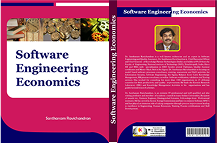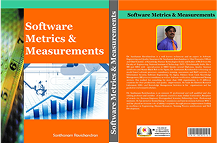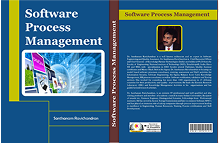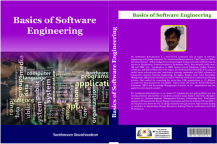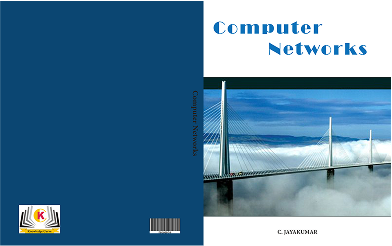PUBLISH WITH KNOWLEDGE CURVE
At Knowledge Curve, we believe that knowledge grows when shared. Our Publish platform provides experts, educators, and professionals with an opportunity to share valuable insights, research, and learning materials with a global audience.
WHAT CAN YOU PUBLISH?
Research Papers & Articles
Academic and industry-focused insights.
E-Learning Courses
Video lessons, online modules, and certification programs.
E-Books & Guides
Educational resources on trending topics.
Case Studies & Whitepapers
Real-world solutions and innovations.
WHY PUBLISH WITH US?
Reach a Wider Audience
Showcase your expertise to learners, professionals, and organizations.
Enhance Your Credibility
Establish yourself as a thought leader in your field.
Monetization Opportunities
Earn from your courses, research, or educational content.
Collaborate with Industry Experts
Join a network of professionals and trainers.
HOW TO GET STARTED
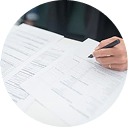
Submit your content
proposal.

Our team reviews it for quality and relevance.

Get published and
reach a vast learning
community.
Join us in shaping the future of education and knowledge sharing
BOOK PROPOSAL FORM
Are you an author looking to publish your book? Submit your book proposal by downloading our Book Proposal Form and sharing the details of your manuscript with us. Our team will review your submission and get back to you.
Instructions to Submit
Download the Book Proposal Form below.
Fill in the required details about your book and yourself.
Email the completed form to [your email address] or upload it via the submission portal.
GUIDELINES FOR AUTHORS
If you intend to write a book, you must submit a book proposal form by giving the maximum information sought in the form. You should provide the overview of the book, its approach, target audience, pedagogical features with a detailed table of contents with at least two sample chapters and your profile.
Introduction
Your proposed title should contain book title ant sub-title. Your book should contain the following in brief:
- Description of your book
- Approach of the book
- Unique features of the book
- Any other key pedagogies or highlights
Table of Contents
Provide the detailed table of contents chapter-wise by illustrating the key aspects of the book
Target Audience & Competition
Describe the target audience of the book, level and discipline for whom the book is intended to. Also provide the market and the competitors books and its strength and weakness and indicate the key features of your book which differs from the competition books.
Permissions
If your manuscript contains excerpts or illustrations from other copyrighted works, obtainwritten permission from the copyright holders before submitting the manuscript.
Delivery of Manuscript
Indicate the current status of the manuscript and the tentative date of completing the full-work in order to schedule the publishing plans
PUBLISHING GUIDELINES
Target
As a first step the author should think clearly about the targeted audience/ readers for whom the book is proposed
Competition
It is vital that that you are aware of any existing books in the market which are potential competitors to your own, how do you intend to position your book with regards to the competitors and by preparing competitive analysis relevant to each competitive book.
Content
Once you have a clear understanding on the target audience and competition, you need to describe the intended scope, pedagogy and content of your book. You should brief with a short description of why the readers will find your book useful, what your book will include, and unique features you plan to include. or accompany your book (includes CD, Instructor Resources, Student Resources) with a detailed Table of Contents.
Pedagogy
Once you are ready with contents, you should be able to prepare the key pedagogical approach/features of your book and how you intend to implement the same and what innovations and strategic advantages which you propose to adopt in order to have an edge over your competitor’s books.
Supplements
In order to help the instructors and students, you should specify the resources accompany your book like instructor resources, student resources, GUI based CD explaining the readers real-time cases and web resources.
Sample Chapters
In order to initiate the process, you should provide the sample chapters with detailed table of contents which will be critical to the publisher to arrive at the publishing decision after due editorial review process.
Author Profile
It’s important to provide the details of the proposed author’s complete profile which consists of teaching, research experience, degrees, affiliations, prior publications, special qualifications, awards, e-mail address and contact no’s.
Reviewing Guidelines
A book review is both a description and an evaluation of a book. It should focus on the book’s purpose, contents, and authority. The experts review feedback is vital for the quality of the book and our guidelines mentioned below will strengthen the editorial process.
Objective
Manuscripts should be evaluated based on the relevance of the contents and its target audience, quality of writing and its pedagogical features.
Strength and Weakness
Highlighting the strength and weakness of the manuscript by giving a detailed point by point justification against respective content. Besides giving the critical comments the reviewer can list the manuscript strength also, which will encourage the author to work on improvisation against the feedback. Just by simply stating that the manuscript need to be re-written does not either help the author nor the publisher. The reviewer should clearly specify as what does and does not need attention/changes.
Key Review Areas
The reviewer should look for any errors of facts, interpretation or calculation of text or illustrations, if the manuscript is similar to the some other work of the same author or some other publisher’s book contents or any instances of plagiarism besides contents, presentation and writing style.
Confidentiality
Reviewers should not use or disclose unpublished content or any other information when the script is under consideration except with the consent of the author.
REVIEWING GUIDELINES
The expert review is the vital for the quality contents of the book in-line with the following:
Contribution to Editorial Decision
The reviewer’s contribution to the editor is vital for decision making on proceeding with the publishing project of the book.
Promptness
Timely submission of the feedback by the reviewer would help the editor to re-plan or re-scheduling the publishing plans
Confidentiality
Any manuscript given for review should be treated as confidential document. The manuscript should not be used by the reviewer for any of his/her own research work or any other purpose without the written consent of the author
Standards of Objectivity
Manuscripts should be evaluated on the basis of authenticity of facts, the quality of writing, target audience and logic of the manuscript. A review should be un-biased and it should not be reviewed on the basis of whether it supports or rejects the personal opinions of the reviewer
Disclosure and Conflicts of Interest
In case the reviewer comes to know that the manuscript is from known sources or if the manuscript is related to the own work of the reviewer please inform the same to the publisher

